Macrophages require Skap2 and Sirpα for integrin-stimulated cytoskeletal rearrangement
- PMID: 22976304
- PMCID: PMC3561861
- DOI: 10.1242/jcs.111260
Macrophages require Skap2 and Sirpα for integrin-stimulated cytoskeletal rearrangement
Abstract
Macrophages migrate to sites of insult during normal inflammatory responses. Integrins guide such migration, but the transmission of signals from integrins into the requisite cytoskeletal changes is poorly understood. We have discovered that the hematopoietic adaptor protein Skap2 is necessary for macrophage migration, chemotaxis, global actin reorganization and local actin reorganization upon integrin engagement. Binding of phosphatidylinositol [3,4,5]-triphosphate to the Skap2 pleckstrin-homology (PH) domain, which relieves its conformational auto-inhibition, is critical for this integrin-driven cytoskeletal response. Skap2 enables integrin-induced tyrosyl phosphorylation of Src-family kinases (SFKs), Adap, and Sirpα, establishing their roles as signaling partners in this process. Furthermore, macrophages lacking functional Sirpα unexpectedly have impaired local integrin-induced responses identical to those of Skap2(-/-) macrophages, and Skap2 requires Sirpα for its recruitment to engaged integrins and for coordinating downstream actin rearrangement. By revealing the positive-regulatory role of Sirpα in a Skap2-mediated mechanism connecting integrin engagement with cytoskeletal rearrangement, these data demonstrate that Sirpα is not exclusively immunoinhibitory, and illuminate previously unexplained observations implicating Skap2 and Sirpα in mouse models of inflammatory disease.
Figures
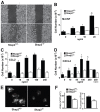

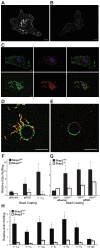
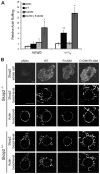

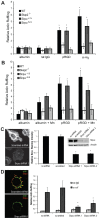
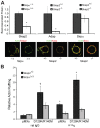

Similar articles
-
Skap2 is required for β2 integrin-mediated neutrophil recruitment and functions.J Exp Med. 2017 Mar 6;214(3):851-874. doi: 10.1084/jem.20160647. Epub 2017 Feb 9. J Exp Med. 2017. PMID: 28183734 Free PMC article.
-
SKAP2, a novel target of HSF4b, associates with NCK2/F-actin at membrane ruffles and regulates actin reorganization in lens cell.J Cell Mol Med. 2011 Apr;15(4):783-95. doi: 10.1111/j.1582-4934.2010.01048.x. J Cell Mol Med. 2011. PMID: 20219016 Free PMC article.
-
M-CSF regulates the cytoskeleton via recruitment of a multimeric signaling complex to c-Fms Tyr-559/697/721.J Biol Chem. 2007 Jun 29;282(26):18991-9. doi: 10.1074/jbc.M610937200. Epub 2007 Apr 9. J Biol Chem. 2007. PMID: 17420256
-
SKAP2-A Molecule at the Crossroads for Integrin Signalling and Immune Cell Migration and Function.Biomedicines. 2023 Oct 14;11(10):2788. doi: 10.3390/biomedicines11102788. Biomedicines. 2023. PMID: 37893161 Free PMC article. Review.
-
Role of c-Src in cellular events associated with colony-stimulating factor-1-induced spreading in osteoclasts.Mol Reprod Dev. 1997 Jan;46(1):104-8. doi: 10.1002/(SICI)1098-2795(199701)46:1<104::AID-MRD16>3.0.CO;2-2. Mol Reprod Dev. 1997. PMID: 8981371 Review.
Cited by
-
Molecular control of PDPNhi macrophage subset induction by ADAP as a host defense in sepsis.JCI Insight. 2025 Feb 4;10(6):e186456. doi: 10.1172/jci.insight.186456. JCI Insight. 2025. PMID: 39903516 Free PMC article.
-
Serum biomarkers VEGF-C and IL-6 are associated with severe human Peripheral Artery Stenosis.J Inflamm (Lond). 2015 Aug 18;12:50. doi: 10.1186/s12950-015-0095-y. eCollection 2015. J Inflamm (Lond). 2015. PMID: 26283889 Free PMC article.
-
CD47 Ligation Repositions the Inhibitory Receptor SIRPA to Suppress Integrin Activation and Phagocytosis.Immunity. 2020 Aug 18;53(2):290-302.e6. doi: 10.1016/j.immuni.2020.07.008. Epub 2020 Aug 7. Immunity. 2020. PMID: 32768386 Free PMC article.
-
Identification of Novel Genes in Osteoarthritic Fibroblast-Like Synoviocytes Using Next-Generation Sequencing and Bioinformatics Approaches.Int J Med Sci. 2019 Jul 21;16(8):1057-1071. doi: 10.7150/ijms.35611. eCollection 2019. Int J Med Sci. 2019. PMID: 31523167 Free PMC article.
-
Eculizumab treatment alters the proteometabolome beyond the inhibition of complement.JCI Insight. 2023 Jul 10;8(13):e169135. doi: 10.1172/jci.insight.169135. JCI Insight. 2023. PMID: 37227781 Free PMC article.
References
-
- Adams S., van der Laan L. J., Vernon–Wilson E., Renardel de Lavalette C., Döpp E. A., Dijkstra C. D., Simmons D. L., van den Berg T. K. (1998). Signal-regulatory protein is selectively expressed by myeloid and neuronal cells. J. Immunol. 161, 1853–1859 - PubMed
Publication types
MeSH terms
Substances
Grants and funding
- F31 GM78720/GM/NIGMS NIH HHS/United States
- R01 AI068150/AI/NIAID NIH HHS/United States
- R01 AI065495/AI/NIAID NIH HHS/United States
- R01 HL032854/HL/NHLBI NIH HHS/United States
- T32 GM007753/GM/NIGMS NIH HHS/United States
- R37 GM041890/GM/NIGMS NIH HHS/United States
- R01 GM041890/GM/NIGMS NIH HHS/United States
- R37 CA049152/CA/NCI NIH HHS/United States
- T32 HL07604-24/HL/NHLBI NIH HHS/United States
- R56AI085131/AI/NIAID NIH HHS/United States
- R37 CA49132/CA/NCI NIH HHS/United States
- F31 GM078720/GM/NIGMS NIH HHS/United States
- R56 AI085131/AI/NIAID NIH HHS/United States
- GM041890/GM/NIGMS NIH HHS/United States
- R01 HL116327/HL/NHLBI NIH HHS/United States
- T32 HL007604/HL/NHLBI NIH HHS/United States
- R01 CA114945/CA/NCI NIH HHS/United States
LinkOut - more resources
Full Text Sources
Molecular Biology Databases
Miscellaneous

